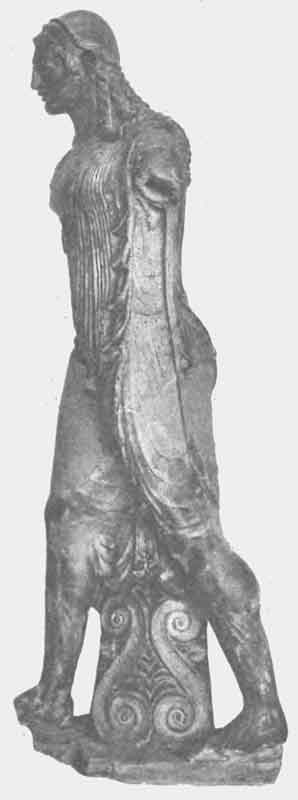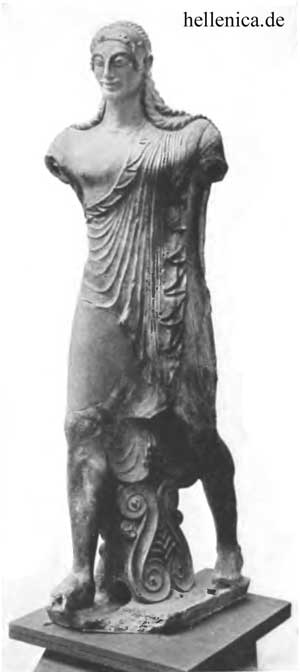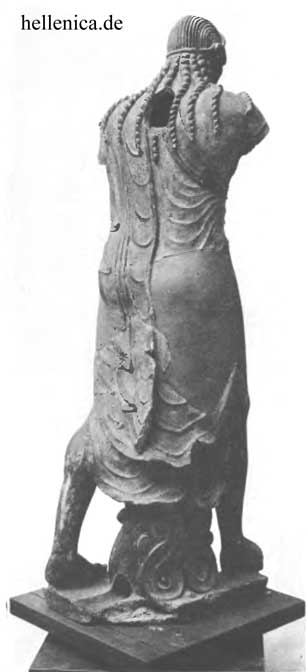.

Apollo Veii,
Etruscan Art
Terracotta c. 510 BC
Discovered 1916
Museo Nationale di Villa Giulia, Rome
The Apollo of Veii is an over-life-size painted terracotta Etruscan statue of Apollo from Veii of, in the 'international' Ionic or late-archaic Etruscan style. It was discovered in 1916, and is now on show in the National Etruscan Museum.
It was probably made by Vulca, the only Etruscan artist we know by name. It was part of a scene of Apollo and Heracles contending over the Ceryneian Hind, 12 metres above the ground on beams on the acroterion of the Portonaccio Sanctuary of Minerva. Apollo, dressed in a tunic and short cloak advances towards his left with his right arm outstretched and bent (his left arm is towards the ground maybe with a bow in his hand); Heracles, with the doe tied around his legs, is outstretched towards the right, leaning forwards to attack with his bludgeon and with his torso in a violent curve.


Sources
Spivey, Nigel. Etruscan Art. London: Thames and Hudson.
See also : Greek Mythology. Paintings, Drawings
| Ancient Greece
Science, Technology , Medicine , Warfare, , Biographies , Life , Cities/Places/Maps , Arts , Literature , Philosophy ,Olympics, Mythology , History , Images Medieval Greece / Byzantine Empire Science, Technology, Arts, , Warfare , Literature, Biographies, Icons, History Modern Greece Cities, Islands, Regions, Fauna/Flora ,Biographies , History , Warfare, Science/Technology, Literature, Music , Arts , Film/Actors , Sport , Fashion --- |
Retrieved from "http://en.wikipedia.org"
All text is available under the terms of the GNU Free Documentation License

